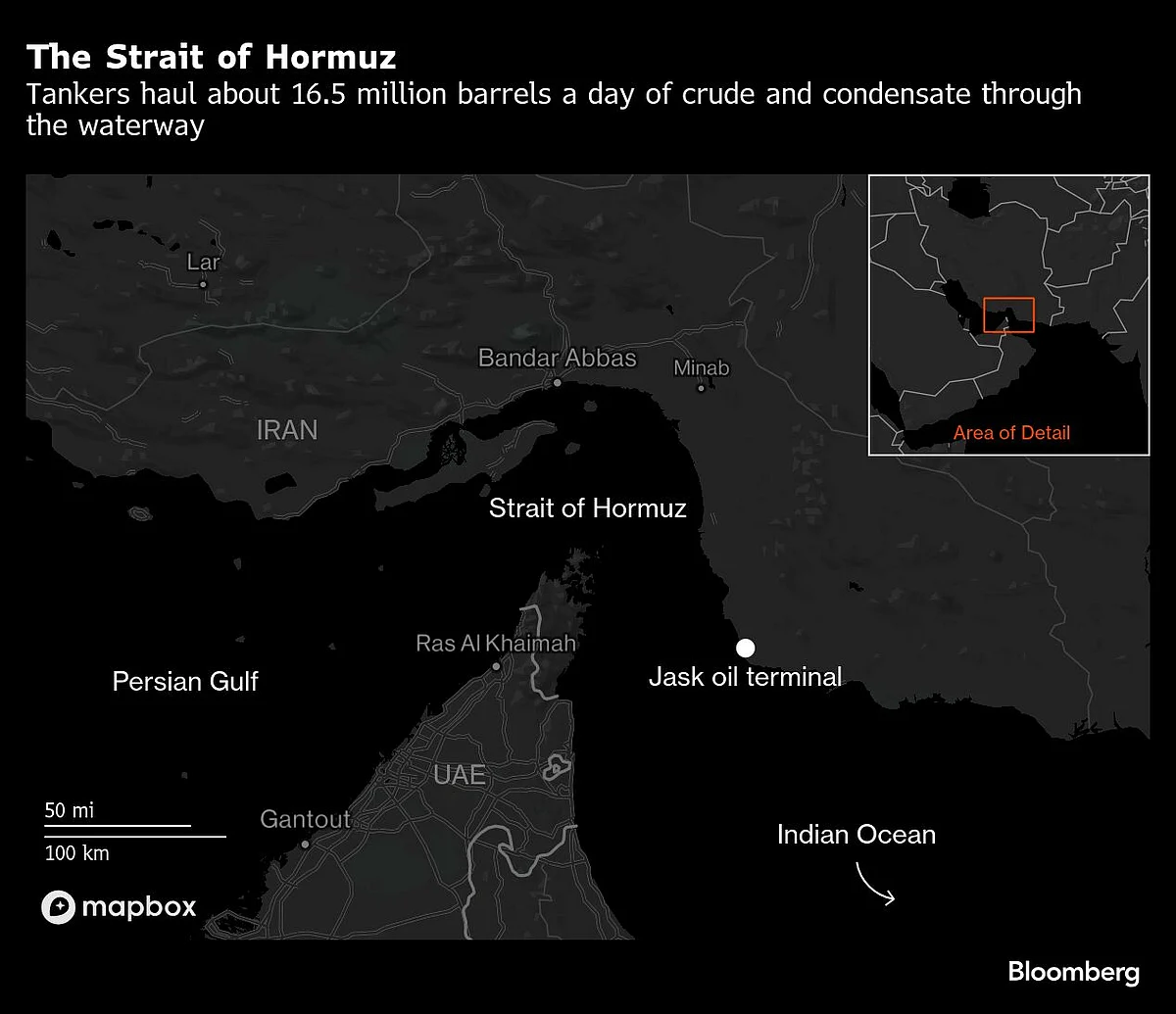Middle East’s Oil Continues To Flow Despite Israel-Iran Attacks
Total commercial traffic amounted to about 110 vessels with a small dip in inbound flows, mainly of bulk carriers.

A week since Israel and Iran started to exchange missile barrages, oil tanker transits through the critical Strait of Hormuz have remained largely steady.
A seven-day rolling average for oil tankers above 10,000 deadweight tons that sailed through the Strait — the passageway for the Persian Gulf’s energy supplies to the world — was approximately 42-to-45, according to vessel-tracking data compiled by Bloomberg.
Total commercial traffic amounted to about 110 vessels with a small dip in inbound flows, mainly of bulk carriers.

While most loading and discharge activities appear to be on schedule, discerning clear trends is challenging as short-term data fluctuates greatly on factors like loading timings, weather, and the impact of widespread electronic interference on navigation signals.
Though the shipping industry remains on alert for any US military intervention in the region, immediate concerns have eased — for now — on President Donald Trump’s suggestion that a decision on any strike against Iran may take up to two weeks.
Oil tankers entering the Persian Gulf numbered 20-23 vessels daily over the past seven days, while roughly 22 ships exited each day. Transits of liquefied petroleum gas tankers were at 8-10 ships, while liquefied natural gas carriers remain within daily norms of 6-8 vessels.

More than a quarter of the world’s oil is shipped through the waterway, which lies between Iran and Oman. Despite repeated threats to close the Strait during geopolitical tensions, Iran’s government heavily relies on the narrow waterway for its own oil and gas exports and revenue.